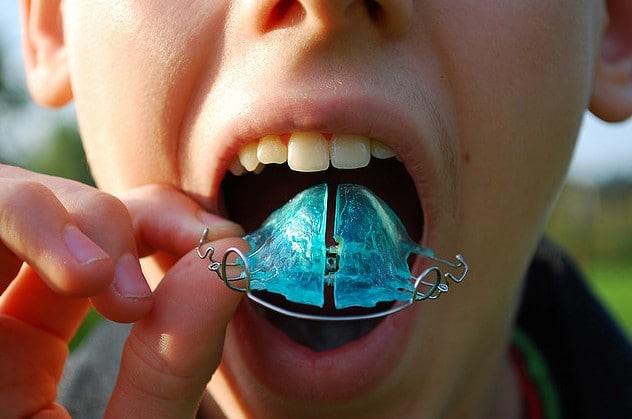
A Guide to Different Types of Dental Retainers
Types of Dental Retainers
Contents
- Types of Dental Retainers
- Purpose of Retainers
- Fixed Retainer
- Clear Retainers after Braces: The Best Solution
- Teeth Shift After Braces
- Everything You Need To Know About Clear Retainers
- How long does an Essix retainer last?
- Which is better Hawley or Essix retainer?
- Are Essix retainers the same as Invisalign?
- Keeping Your Teeth Aligned Before Dental Retainer Arrives
- What happens if you don’t wear your retainer?
- Is a Retainer Really Necessary After Orthodontic Correction?
A retainer is a dental appliance worn after orthodontic treatment to maintain the position of the teeth. It is custom-made to fit the patient’s mouth and is designed to keep the teeth from shifting back to their original position. Retainers can be removable or fixed (bonded) to the teeth, usually worn for a period determined by the orthodontist. Retainers are essential to the orthodontic treatment process and help ensure that the patient’s teeth stay straight and properly aligned. There are three main types of dental retainers:
Hawley retainers (wire, removable)
These are made of acrylic and a thin wire that wraps around the front of the teeth. Hawley retainers are adjustable, allowing for small tooth alignment changes. They are also durable and easy to clean. However, some people may find them uncomfortable to wear or may experience speech impediments.
Essix retainers (removable)
Clear plastic retainers are common alternatives for people who do not want a visible retainer. Essix retainers are clear, plastic retainers custom-made to fit over the teeth. They are virtually invisible, making them a popular choice for people who want a discreet retainer option. They are also comfortable to wear and do not affect speech. However, Essix retainers are not as durable as Hawley retainers and may need to be replaced more frequently.
Essix retainers are made of a clear plastic material that is molded to the shape of the patient’s teeth. They are virtually invisible and comfortable to wear, as they fit snugly over the teeth without metal wires. Essix retainers can be removed for eating, brushing, and flossing, but it can be challenging to adjust for minor tooth movements.
Permanent (fixed) retainers
These thin wires bonded to the back of the teeth, typically the lower front teeth. They are invisible and provide a long-term solution for keeping teeth in place. However, they can be challenging to clean and may require more dental visits for maintenance. In some cases, permanent retainers may cause speech difficulties or tongue irritation.
The type of retainer chosen depends on several factors, such as the patient’s needs, preferences, and the orthodontist’s recommendation. The retainer type also depends on the extent of orthodontic correction, the severity of the dental problem, and the patient’s age.
Purpose of Retainers
Most of us, as teenagers, have worn dental braces because very few of us are born with perfectly aligned teeth. Once the orthodontic treatment is over and your braces are removed, the dentist often prescribes a retainer that must be worn to complete the treatment.
The last stage of orthodontic treatment is retention which involves you attempting to maintain the teeth in their new position. Suppose the teeth are not retained or secured in their original position. In that case, it may cause the treatment to relapse, and eventually, you may need to get the orthodontic treatment done again. Therefore, to prevent deterioration, you need to remember that you must wear a retainer after the procedure.
Predominantly, there are two types of retainers, the removable retainer and the fixed retainer, and the orthodontist fits both. In this article, we will discuss whether or not the fixed retainer is suitable for you.
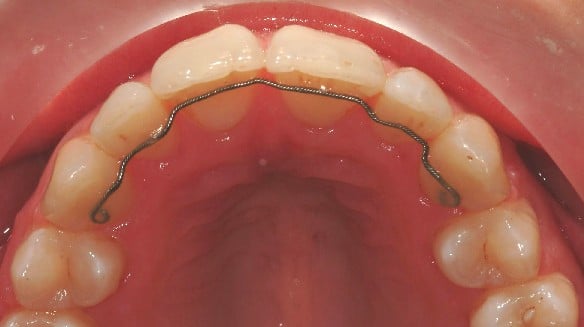
Fixed Retainer
A fixed retainer is a wire secured or fixed directly to one’s teeth permanently. A fixed retainer is attached to the front six teeth of the upper and lower dental arch. The fixed retainer is fitted by the dentist and is not detachable by the patient, which is why it is known as a permanent, bonded, or fixed retainer. Not all patients have been prescribed a fixed retainer after their orthodontic treatment, and fixed retainers are bonded only in the case of specific patients.
Fixed retainers are perfect for patients who are careless when wearing their retainer after braces. Suppose one does not take special care and does not wear a retainer. In that case, a relapse is highly likely if the dentist believes that the individual is not motivated enough to wear the removable retainers after the orthodontic treatment. The dentist may fit a permanent or fixed retainer onto the teeth of the patient. The dental occlusion of the individual also needs to be taken into consideration. Patients that do not have a sufficient amount of overjet may not be able to get a fixed retainer bonded after braces. In addition, patients with a propensity for tooth decay or individuals with bad oral health should preferably not consider getting a fixed retainer.
Clear Retainers after Braces: The Best Solution
Clear retainers after braces are dental devices used to maintain straight teeth after braces. Retainers and braces are two of the different types of dental devices. Braces are used to align the teeth in the proper position; however, once the braces are taken off, there is a possibility that the treatment may relapse and the teeth may become crooked again. Therefore, to prevent this, dentists recommend patients wear clear retainers after braces to hold their teeth in the proper realigned place. Consequently, clear retainers after braces are used to prevent one’s teeth from malocclusion or misalignment.
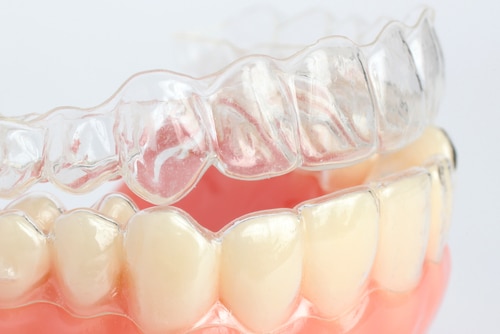
Clear retainers after braces are typically made using a mold or cast of one’s teeth and gums to ensure that they hold the teeth and gums as tightly as possible and is then mounted over the entire arch of the teeth. This is because when braces realign and straighten teeth, the gums sometimes leave a gap and do not hold the bone tissues firmly. As a result, there is a probability that the teeth lose their alignment and can go back to their previous position. Therefore clear retainers after braces align the gums with one’s teeth and hold them tightly.
Teeth Shift After Braces
Clear retainers after braces are becoming increasingly popular because of their crystal color and relatively less striking look. A clear retainer after braces is made of either polypropylene or polyvinylchloride (PVC). As mentioned earlier, they are made by taking an impression of the patient’s teeth and gums so that it fits comfortably over the teeth and gums. Clear retainers after braces are in demand because they are comfortable and inconspicuous.
One of the main advantages of clear retainers after braces is that these appliances are customized to perfectly fit one’s teeth and gums. The clear retainer is also very comfortable and relatively easy to wear compared to traditional metal retainers. As discussed earlier, clear retainers after braces are of a translucent color, making them less visible, and people can use clear retainers in public places without hesitation.
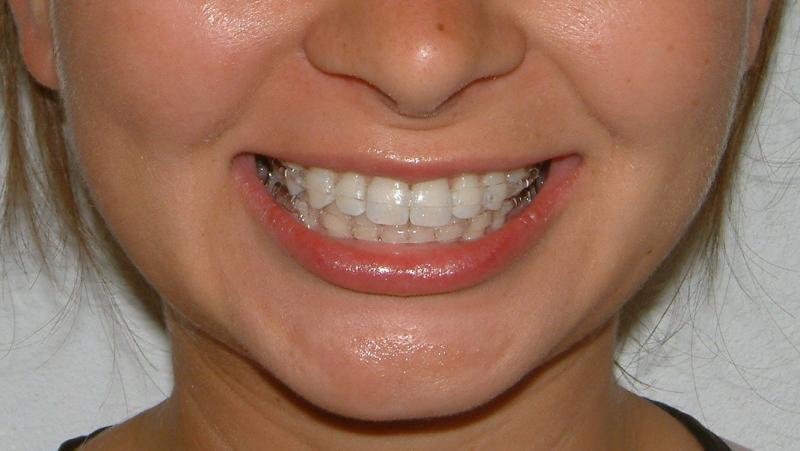
Because clear retainers after braces stay in one’s mouth most of the time, bacteria, plaque, and germs accumulate on the retainer, which could harm the individual’s oral health. Therefore, when you remove clear retainers after braces, make sure you rinse them thoroughly with warm water and soak them in a retainer cleaning agent from time to time.
Everything You Need To Know About Clear Retainers
The type of dental retainers that are becoming increasingly popular is clear retainers. Clear retainers are made of either polypropylene or polyvinylchloride (PVC) material by using a mold or cast of one’s teeth and gums and are mounted over the entire arch of the teeth. Because clear retainers are custom-made to fit over the teeth, they help to hold the teeth firmly in place. Clear retainers are also more comfortable to wear than metal retainers. Patients may be able to comply better with wearing clear retainers for the required period because they are inconspicuous.
In addition to some benefits, clear retainers also have their set of disadvantages. Clear retainers are made of plastic and, therefore, very delicate and fragile and can easily break if not handled properly. Because they cover the entire arch of the teeth, they may not be recommended if you tend to clench or grind your teeth very often, as this may cause cracks or small holes in the clear retainers. Clear retainers are light in weight, and because they are made of transparent plastic, one could quickly lose the appliance. If the gums are puffy, swollen, or inflamed, it may not be possible to take an impression or mold because it would result in loose-fitting clear retainers.
Because clear retainers stay in one’s mouth most of the time, bacteria and plaque build-up on the retainers, which could harm the individual’s oral health. Therefore, when you remove the clear retainers, rinse them thoroughly with warm water and soak them in a retainer cleaning agent at least once a day.
How long does an Essix retainer last?
The lifespan of an Essix retainer can vary depending on factors such as the wearer’s habits, frequency of use, and how well they care for the retainer. On average, Essix retainers are expected to last for 1-2 years with proper care and maintenance. However, if the retainer is damaged or warped, it may need to be replaced sooner. It’s important to follow the care instructions your dentist or orthodontist provides to ensure that your Essix retainer lasts as long as possible.
Which is better Hawley or Essix retainer?
Hawley and Essix retainers have advantages and disadvantages, and which is better depends on your specific needs and preferences.
Hawley retainers are made of a combination of metal and acrylic, with a metal wire that goes across the front teeth and acrylic molded to fit the roof of the mouth. They are adjustable and can be tightened or loosened as needed, and they can also be used to correct minor teeth movement. Some people prefer Hawley retainers because they are durable, can last for many years with proper care, and can be adjusted if teeth move or shift over time. However, they are also more noticeable and can be bulkier in the mouth.
Essix retainers are clear plastic retainers that fit over the teeth, similar to Invisalign clear aligners. They are often more comfortable and less noticeable than Hawley retainers, which some people find beneficial. They are also easier to wear and clean and less likely to cause irritation or sores in the mouth. However, Essix retainers can be more expensive than Hawley retainers and are less adjustable, meaning that if your teeth shift significantly over time, a new retainer may need to be made.
Are Essix retainers the same as Invisalign?
Essix retainers are similar to Invisalign aligners in that they are made from clear, thin plastic material that is custom-made to fit the patient’s teeth. However, while Invisalign aligners are designed to move the teeth into a desired position gradually, Essix retainers are designed to maintain the current position of the teeth after orthodontic treatment. Additionally, Essix retainers are generally thinner and less noticeable than Invisalign aligners, as they do not require attachments or buttons to hold them in place.
Keeping Your Teeth Aligned Before Dental Retainer Arrives
After wearing braces for a specific time to align your teeth, there will be a necessity for you to wear a retainer. Braces are applied to align the teeth in the proper position; however, once the braces are taken off, there is a probability that the treatment may relapse and the teeth may grow crooked again. Therefore, to counteract this, dentists recommend patients wear retainers after braces to hold their teeth in the proper realigned place. Some people are careless and have a terrible habit of leaving the retainer around the home and then neglecting to either wear them or place them in a retainer box, and as a result, they lose their retainers. Misplacing your retainer can cause your teeth to shift back to their original place and become crooked again. However, if you have misplaced or lost your retainer, there are a few actions that you can take to make sure that your teeth do not shift before getting replacement retainers.
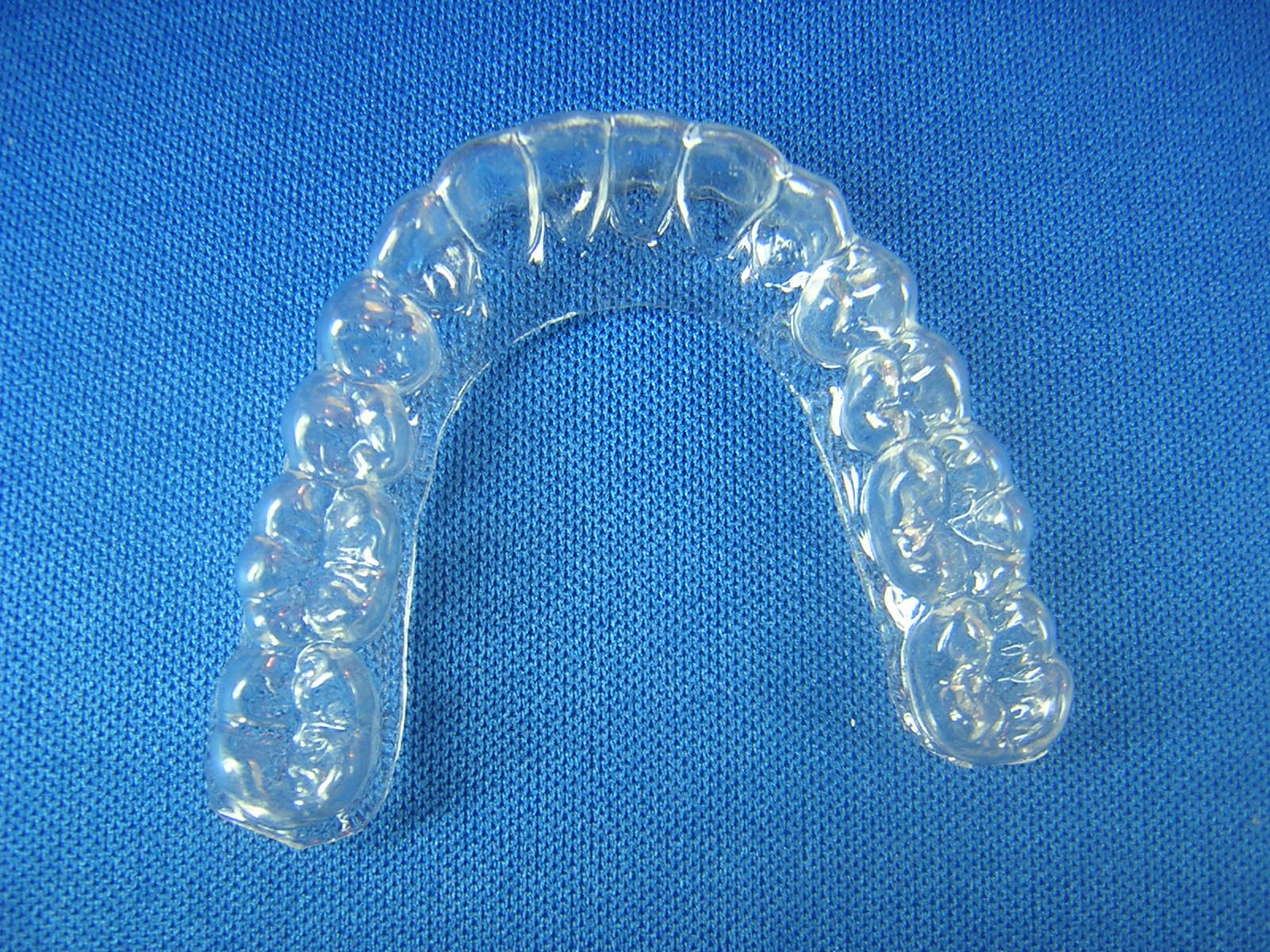
What happens if you don’t wear your retainer?
First, you need to contact your orthodontist immediately and inform him that you have lost your retainer and need replacement retainers. This is the only way to ensure teeth stay in place, as the dentist’s office can promptly arrange replacement retainers. Your orthodontist understands that before the replacement retainers arrive, every day without wearing them means that the teeth are shifting back to their earlier position and, thus, undoing years of good orthodontic work.
Next, ask your orthodontist for advice on what you can do to prevent your teeth from shifting until the replacement retainers arrive. Even though there may not be much that one can do to keep one’s teeth in place until the replacement retainers come, it is advisable to ask if he may have a few do’s and don’ts for you to restrict movement of your teeth before the replacement retainers are received.
You might ask the orthodontist for a temporary solution while awaiting the replacement retainers. Using a clear aligner is one such solution that one can use before the replacement retainers are procured. However, it is advised to ask the dentist or orthodontist if this is a good alternative before doing so. Otherwise, it could cause more harm than good. It is essential to avoid stress on your mouth, which includes grinding or clenching your teeth together. Doing so will make the muscles in your mouth and jaw expand and extend, which will further cause your teeth to move. Even though this might seem small, until you have the replacement retainers, you must take the necessary precautions to avoid moving your teeth.
Is a Retainer Really Necessary After Orthodontic Correction?
In most cases, a retainer is the final step in orthodontic correction. This custom-made appliance is made from metal, and plastic fitted precisely to the wearer’s mouth. After braces shift the alignment of the teeth, this particular device keeps them from moving back to their original positions. If you or your child is looking forward to having braces removed, we encourage you to learn more about what to expect regarding retainers.
While orthodontists will specify precisely when and for how long the retainer should be used, in most cases, it should be worn between meals and at night for at least three months after braces are removed.
These appliances may be either removable or fixed. The removable version is designed to be taken out when eating and is usually worn for at least a year after braces are removed. The fixed version is attached semi-permanently to the teeth and cannot be removed without an orthodontist’s assistance. This type of appliance is usually worn indefinitely, often for several years.
Caring for a retainer is an integral part of oral health. Removable ones should be soaked with denture cleaner tablets or vinegar and water solution when it’s not in your mouth. It’s essential to keep removable retainers in liquid when not in use since the plastic can crack if it gets too dry. Those with fixed appliances must keep up with regular dental checkups to avoid cavities and decay developing around the retainer.
In addition to keeping teeth straight, there are a few unique benefits of wearing a retainer. First, a correct bite allows children to chew food more thoroughly, which means they get more nutrients from their meals. In addition, adults with diabetes can avoid oral complications by wearing a retainer to promote straight teeth. Crooked or misaligned teeth are more likely to develop cavities and decay. For some kids, wearing a retainer can help to correct speech problems and help with breathing issues, such as snoring.
For many parents, the most challenging aspect of orthodontic treatment is ensuring that your child wears the retainer as directed and doesn’t lose it at school or sports practice. Some kids find a bright case for their appliance an effective way to remember to bring it to school. Also, keeping the case in the same place can help make it a habit.

